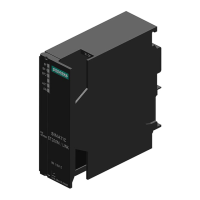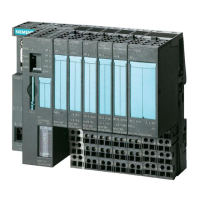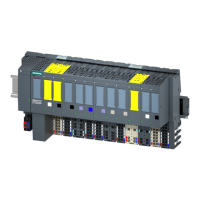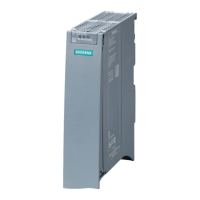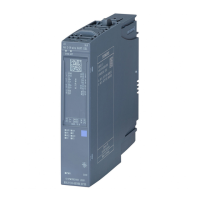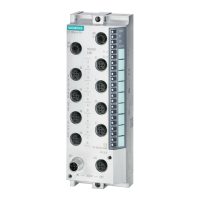Time-based IO basics
2.6 Technical implementation
High-precision input/output with Time-based IO
Function Manual, 08/2014, A5E33454822-AB
21
Modes for updating the process image
In isochronous mode, you can influence the order of the update of the process image
partition of the input and output data. In doing so, you can select the following program
execution models:
● IPO model (application cycle factor = 1)
● OIP model (application cycle factor >= 1)
The abbreviations I, P, O stand for the following processes: I = Input, P= Processing,
O = Output.
Additional information on the application cycle factor is available in the PROFINET with
STEP 7 (http://support.automation.siemens.com/WW/view/en/49948856) Manual.
IPO model (application cycle factor = 1)
The user program is started after the delay time. Start by updating the corresponding
process image partition of the inputs in the user program by calling the SYNC_PI system
instruction. Processing is started next (for example, calculation of the time stamps). The
corresponding process image partition of the outputs is updated at the end of the user
program in the CPU by SYNC_PO.
Properties of the IPO model:
● Supports shorter response times
● The application cycle may not be greater than the send clock.
This gives the application less time than with the OIP model.
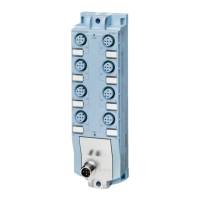
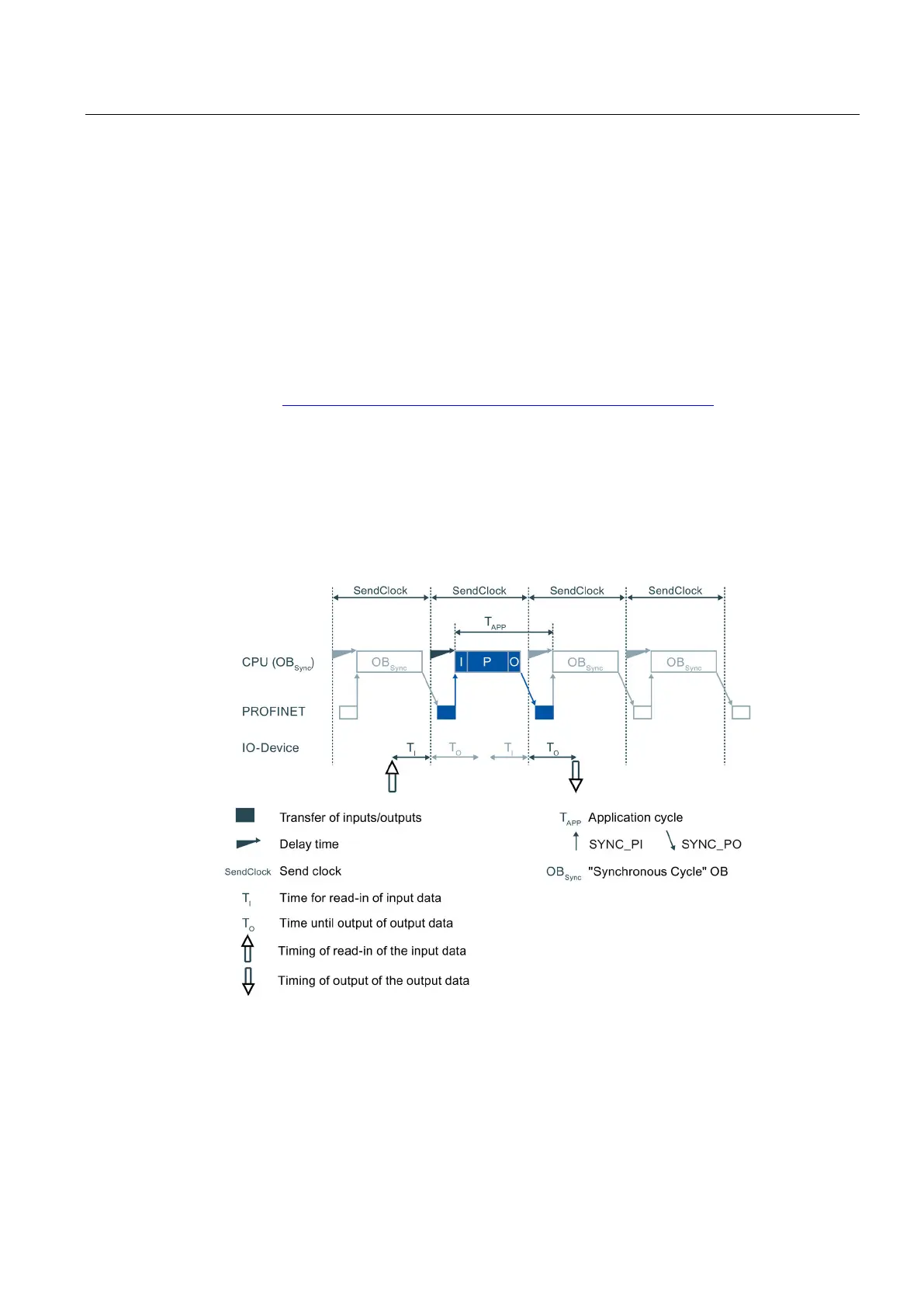